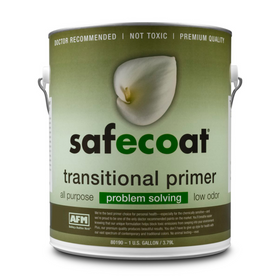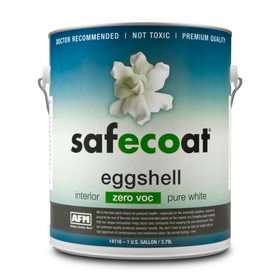- Home
Significant to the performance of binders and solvents are the group of chemicals known as VOCs. These are organic chemical compounds that evaporate readily into the air under normal conditions. This evaporation means that when they're present in paint or other materials inside your home, they're also present in the air you breathe. Short-term exposure to VOCs can cause nose, throat, and eye irritation, headaches, nausea, dizziness, and fatigue. Long-term exposure has been linked to cancer and damage to the liver, kidneys, and nervous system. Formaldehyde, benzene, kerosene, acetone, and toluene are examples of VOCs used in paint.
What Is a Biocide?
One example is biocides—sometimes referred to as protein inhibitors—that prevent mold, mildew, and spoilage. Without biocides, you couldn't store water-based paints without them breaking down and becoming foul-smelling and unusable. Eliminating biocides, then, is a challenge even for manufacturers specializing in safe paint.
What Are Odor Masking Agents?
Less critical to paint performance are odor-masking agents. These patented formulas employ a variety of chemicals to disguise the odor of paint as it dries. While you may not smell the chemicals in a low-odor paint, that doesn't mean they aren't there. Also, adding an odor-masking compound adds another potentially irritating substance.
What Are APEs (Alkylphenol Ethoxylates)?
A specific category of chemical compounds receiving scrutiny for their health and environmental effects is alkylphenol ethoxylates (APEs). These chemicals, added to paints as surfactants, are suspected endocrine disruptors and toxic to fish when released into the environment. Several big paint brands have already eliminated them, including Benjamin Moore's Aura, Natura and Regal Select lines, Sherwin-Williams Emerald, Harmony, and SuperPaint lines.
Other certifications focus not on VOC content but potentially dangerous emissions, focusing on chemicals we're breathing in. For example, UL's GREENGUARD Gold certification limits the emissions of 360 different VOCs for which health impacts are known. They cap the total VOC emissions to 220 micrograms per cubic meter. According to Josh L. Jacobs, UL's director of environmental codes and standards, limits are based on safe thresholds established by scientific organizations worldwide and then reduced further. More than 1400 paints and coatings have obtained Greenguard Gold certification.
SCS Indoor Advantage and Indoor Advantage Gold certification also measure emissions, limiting 35 individual VOCs specified under the California 01350 standard. Its green products guide lists certified paints.



















